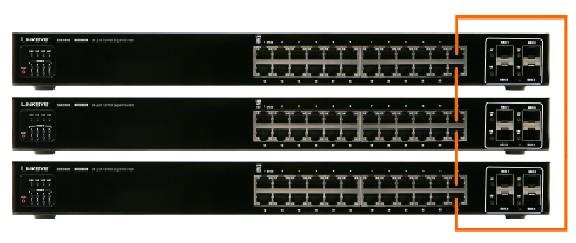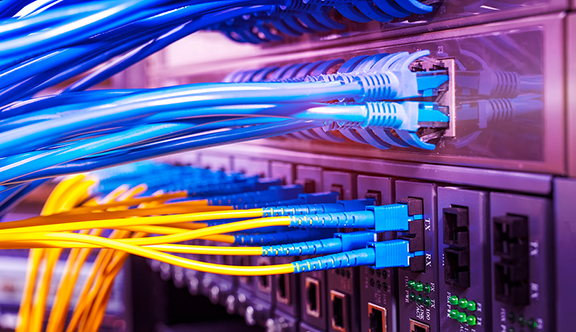Switch optical port intercommunication means that the optical fiber ports of two switches are connected to each other to achieve the purpose of network connection.
Can two switches with optical ports be directly connected by optical fiber? Yes, the main line of the optical fiber LAN is a direct switch, followed by a router.
What is the meaning of Switches Cascade?
- The switch can be connected to the back of the switch. The switch connected to the switch is called cascade. Theoretically, it can be cascaded infinitely. However, in the actual application process, it is recommended that the cascade does not exceed four layers.
- Cascading can be defined as two or more switches connected to each other in a certain way. According to needs, multiple switches can be cascaded in multiple ways. In a larger local area network such as a campus network (campus network), multiple switches generally form a bus, tree, or star cascade structure according to performance and usage.

What should we care when connecting switches by fiber optical ports?
Pay attention to the following points when connecting switches of different manufacturers:
- Whether the optical modules of the two switches are single fiber or dual fiber.
- Whether the optical modules of the two switches are single-mode or multi-mode.
- Whether the wavelengths of the optical modules of the two switches are the same (pay attention to whether the transceiver is the same when using a single fiber).
- Whether the transmit optical power and optical receiving sensitivity of the optical modules of the two switches are in the same range.
- Whether the transmission distance of the optical modules of the two switches is the same.
- Whether the port speed and duplex mode of the optical modules of the two switches are the same.

What are the main requirements of connecting switches by fiber optical ports?
Under normal circumstances, two switches are required to meet the following conditions:
- The single fiber or dual fiber is unified under the same mode fiber. If the single and dual fibers are connected, a single and dual fiber converter is required.
- The fiber mode is unified as single-mode or multi-mode. If single-mode and multi-mode fibers are connected when dual-fiber, a single-multi-mode converter is required.
- The wavelength must be unified for dual-fiber (850nm, 1310nm, 1550nm), and the transceiver wavelength must be unified for single-fiber (for example: 1310nm for transmission, 1550nm for reception or other wavelengths).
- The transmit optical power and optical receiving sensitivity need to be in the same range.
- Whether the transmission distance of the optical module is the same. If the above five conditions are all met, the two optical modules can be connected within a short distance, but attention should be paid to whether the optical receiving sensitivity of the long-distance optical module reaches the opposite end. Greater than the minimum overload point.
- The speed and duplex mode of the optical module should be set to forced 100M, Gigabit full duplex or auto-negotiation. If one end is auto-negotiation and the other end is forced 100M, Gigabit full duplex, it cannot link up. The 100M optical port and the Gigabit optical port cannot communicate.

If you want to order switches, welcome to visit our online shop. There are various types of switches, including access switches, convergence switches, data center switches, etc.
Related Topics:
Switch Setting: How to Build Intercommunication between Two Switches?
Buyer Guide: How to Select Access Layer Switches for Enterprise?
125 Articles, Datasheets, FAQ, Comparison and More of Cisco Catalyst Switches






